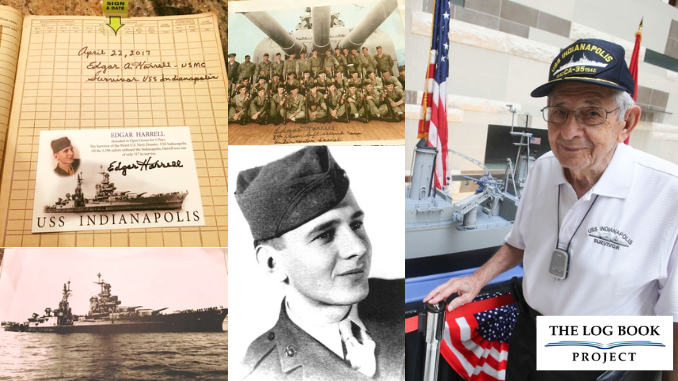
Edgar Harrell served as a Marine aboard the USS Indianapolis when the ship was sunk by Japanese submarine I-58. Harrell survived nearly five days adrift in the Pacific Ocean before being rescued as one of only 316 survivors of the ships complement.
Enlisting
Enlisted in the United States Marine Corps during World War II, a young man from Tennessee determined to serve his country. After completing Marine Corps boot camp, Harrell was assigned to shipboard duty, which was a common role for Marines at the time: protecting naval vessels from potential threats, managing security, and manning gun stations.
He became part of the Marine Detachment aboard the USS Indianapolis (CA-35), a decorated Portland-class heavy cruiser that had already seen extensive action in the Pacific Theater. Throughout 1944 and into 1945, Harrell participated in numerous critical operations. The Indianapolis served as a flagship for the Fifth Fleet under Admiral Raymond Spruance and took part in some of the most pivotal battles of the war, including:
- The Battle of the Philippine Sea (June 1944), known as the “Great Marianas Turkey Shoot,” where American forces decimated Japanese carrier-based aircraft.
- The Bombardment of Iwo Jima (early 1945), where the Indianapolis shelled Japanese positions ahead of the historic U.S. Marine Corps landings.
- The Battle of Okinawa (Spring 1945), where the Indianapolis again provided heavy bombardment to support Allied forces and faced relentless kamikaze attacks.
During these operations, Harrell manned his station amid fierce combat, fulfilling his Marine duties by defending the ship from air and surface threats. The Indianapolis endured damage at Okinawa, when it was struck by a kamikaze plane in March 1945, causing significant casualties and damage. Harrell survived this attack and continued his duties aboard the repaired vessel.
The historic photograph below shows the Marine detachment of the USS Indianapolis posing beneath the ship’s No. 1 turret. Edgar Harrell is identified as the eighth Marine from the left in the second row, directly under the center barrel.
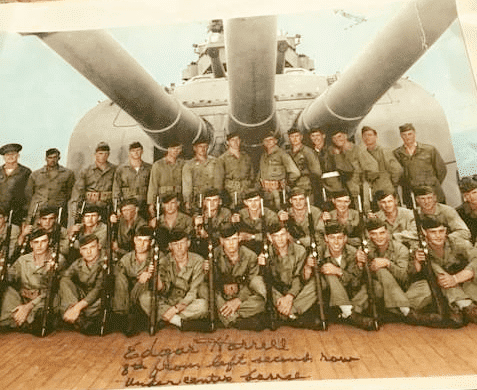


Delivering “Little Boy”
After repairs were completed in San Francisco, the Indianapolis received a highly secretive new mission: to transport the components of the atomic bomb Little Boy to the island of Tinian.
Harrell, like most of the crew, did not know what they were transporting — it was so secret that only the ship’s captain (Charles McVay) and a handful of officers knew the nature of the cargo.
Among the cargo was the uranium-235 core, the heart of the bomb that would cause the nuclear explosion, packed in a specially designed, shock-proof container that was heavily guarded and kept secret. Alongside it were other essential bomb components, including about half of the specialized high-explosive firing mechanisms and assemblies, secured in several small, sealed boxes.
The sinking
Following the successful delivery, the Indianapolis began sailing unescorted toward the Philippines when it was attacked by the Japanese submarine I-58 on the night of July 30, 1945. Torpedoes struck the ship, causing catastrophic damage, and the cruiser sank in approximately 12 minutes.
Harrell survived the immediate chaos of the sinking by finding debris to cling to. Over the next four and a half days, he endured extreme thirst, exhaustion, shark attacks, and the psychological trauma of watching fellow crew members die around him. He credited his strong Christian faith with helping him maintain hope during those dark days.
On August 2, a passing patrol plane spotted the survivors, and Harrell was rescued — one of only 316 survivors from a crew of nearly 1,200.
After the war, Edgar Harrell went on to build a life centered on family, faith, and service. In later years, he became a passionate advocate for remembering the sacrifice of his fellow Indianapolis shipmates, frequently speaking at schools, military gatherings, and commemorative events.
His memoir, “Out of the Depths”, written with his son, provides a detailed and deeply personal account of both his service and the harrowing ordeal of survival.
Obtaining the signature
The story of the USS Indianapolis is perhaps one of the more publicized events of WWII due to various films and popular culture (Jaws). As an islander himself Nick has always regarded the ocean with a sense of absolute awe. It’s beauty, mystery and ferocious power are staggering; it takes no prisoners. How men like Edgar Harrell survived the ordeal of the Indianapolis will forever elude us. His tremendous faith in Providence is inspiring to say the least.
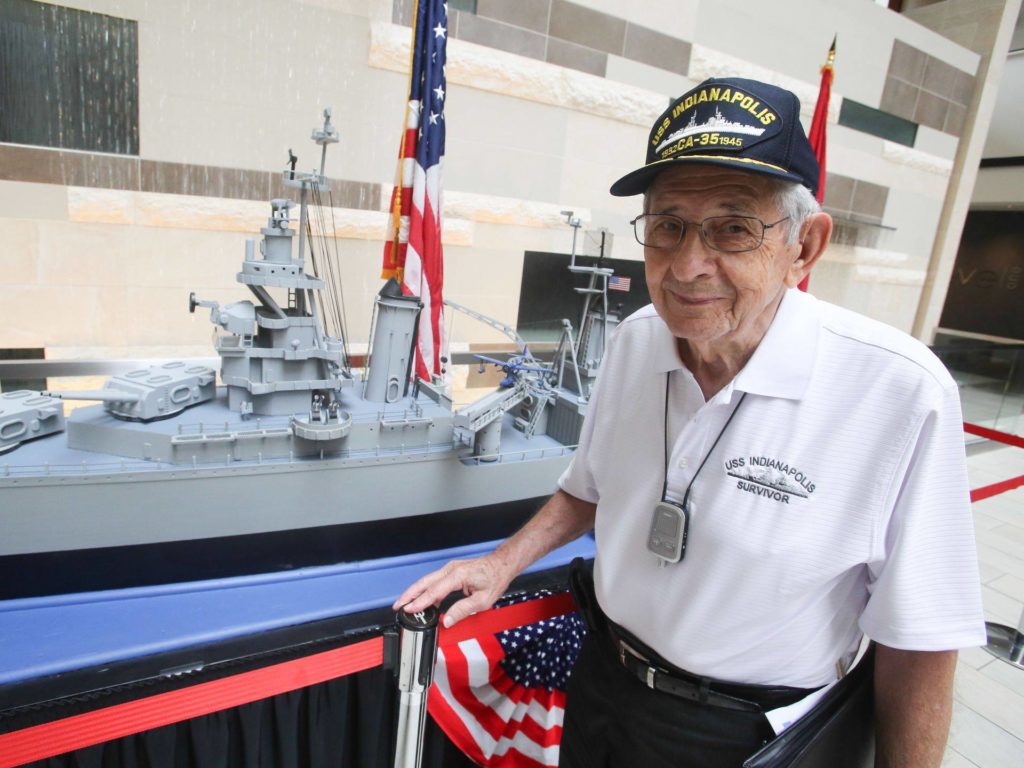
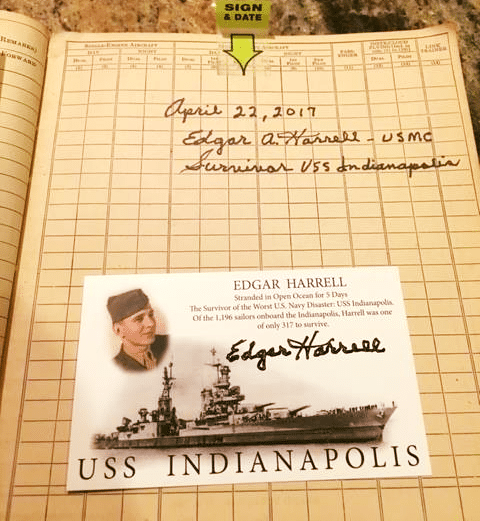
Like the vast majority of veterans, he said nothing of it for years. Eventually his son David convinced him to write; the resulting book “Out of the Depths” is co-written by father and son. David was instrumental in facilitating his father’s signature in the log book and we are indebted to both of them.
(On this occasion the book was slightly delayed getting back. I was able to contact local Postmaster Cindy Wallace Avant who remembered handling the package the day before and assured us it was on its way back. Her kindness has been repeated multiple times by many people along this journey, I am grateful to them all.)
The number of survivors from the Indianapolis has been whittled down and these incredible men will not be with us much longer. There are still occasional reunions and public presentations. To learn more about their incredible legacy visit All Things USS Indianapolis CA-35.
The wreckage of the ship was discovered in 2017; one can only imagine the powerful emotions and memories conjured up for Harrell and his co-survivors.
The majority of persons invited to sign the log book have been asked randomly. The scale of the conflict was so incredibly vast; it defies comprehension. Intuitively one can imagine armies, campaigns, cities, victims, refugees etc that impact each other in the broader sense.
As we began to research the signatories’ backgrounds, these large scale conflicts became redefined in very personal stories, from which individual connections emerge. Edgar Harrell’s ship the Indianapolis, had just delivered components of the bomb that fell on Shigeaki Mori’s city, Hiroshima, on 6 August 1945.


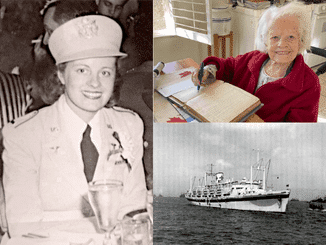
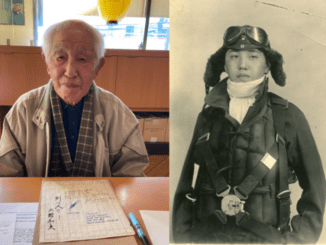

Be the first to comment